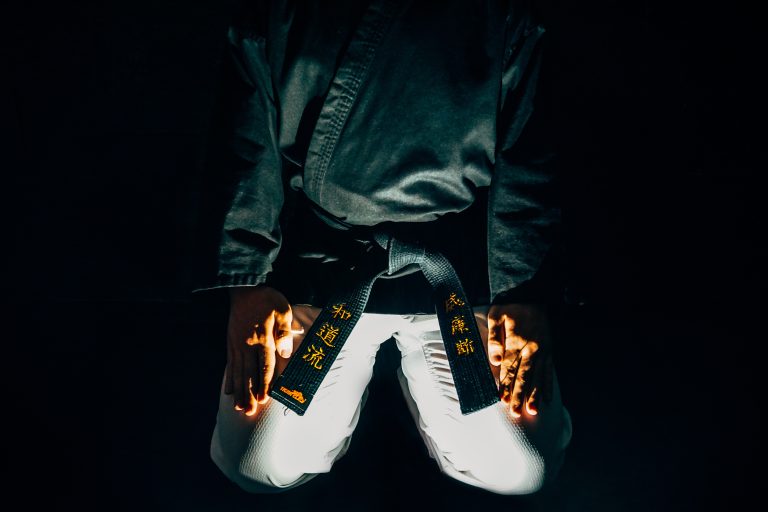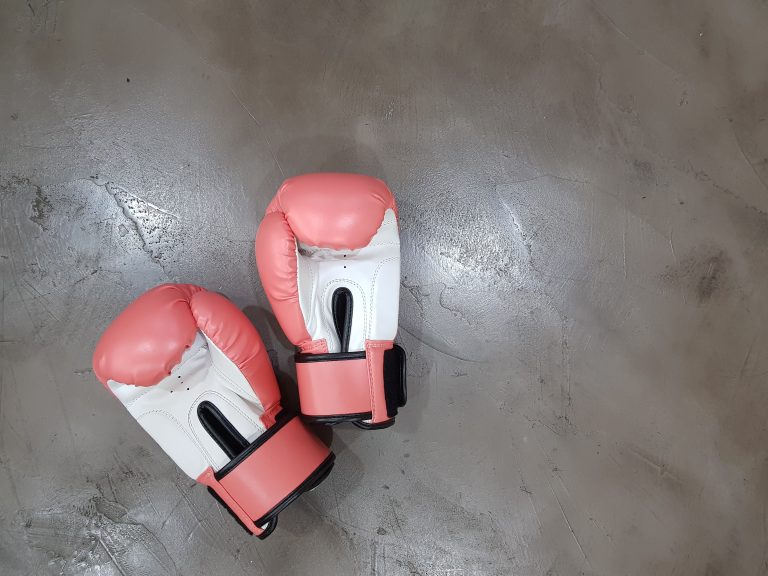Karate Black Belt Ranks: Meaning, Requirements and Beyond
Karate is a martial art that has been practiced for centuries. It is considered one of the most disciplined forms of martial arts, and its practice requires dedication, discipline, and skill. One of the most honorable achievements in Karate is the attainment of a black belt. The black belt is not only a symbol of mastery but also signifies the completion of an extensive training program. In this blog post, we will explore the meaning, requirements, and available ranks of Karate black belts.
What is a Karate Black Belt?
In Karate, a black belt is a rank that denotes the highest level of achievement in the martial art. It represents a dedication to the art and a commitment to a deeply ingrained sense of discipline. Reaching the level of a black belt requires years of consistent practice and training. It also demands a high degree of focus, dedication, and self-discipline. Receiving a black belt is a testament to a Karateka’s commitment to the art of Karate and signifies that they are ready to take on more advanced training.
What are the Rank Requirements for Karate Black Belts?
The requirements for achieving a black belt in Karate may differ from one style to another. However, the basic requirements are similar across all styles. There are typically ten ranks leading up to the black belt, and each rank has its unique set of requirements.
Karateka needs to demonstrate proficiency in various areas, including katas (pre-arranged fighting sequences), sparring, self-defense, and board breaking. Additionally, they need to possess excellent physical fitness and understanding of karate principles before moving to the next level. The transition from one rank to the other typically involves an exam to test the Karateka’s proficiency in the required areas.
What are the different Karate Black Belt Ranks?
There are ten ranks leading up to the black belt. The first-degree black belt is Shodan, and each subsequent rank up to the tenth degree is known as Dan. The Dan ranks include:
- Shodan (1st Dan)
- Nidan (2nd Dan)
- Sandan (3rd Dan)
- Yondan (4th Dan)
- Godan (5th Dan)
- Rokudan (6th Dan)
- Shichidan (7th Dan)
- Hachidan (8th Dan)
- Kudan (9th Dan)
- Judan (10th Dan)
What is the significance of the Karate Black Belt?
The black belt rank in Karate signifies the completion of the fundamental training program. It symbolizes the Karateka’s mastery and proficiency in the art. The black belt is also essential in defining the sense of discipline and commitment required to excel in the art of Karate.
Black belts are not merely awarded on a technical basis alone. The Karateka must also demonstrate a profound understanding and appreciation of the principles of Karate, such as discipline, respect, focus, perseverance, and humility. The attainment of the black belt is, therefore, a deeply humbling experience.
What Comes After Achieving the Karate Black Belt?
Upon attaining the black belt, Karateka can continue to progress and achieve higher Dan ranks. However, unlike the previous ranks, Dan ranks are not determined by taking an examination but by a system of nomination and selection.
Usually, only the most dedicated and accomplished Karateka attain the higher Dan ranks. For most people, achieving the black belt is a significant milestone in their Karate journey, and they are content to continue training and honing their skills.
For some, becoming a black belt motivates them to impart their knowledge of Karate to others. They become instructors or start their own schools, sharing their passion for Karate with the world.
Frequently Asked Questions About Karate Black Belt Ranks
Karate black belt ranks have mystified people for ages. Many people think that obtaining a black belt is the ultimate goal and the end of their karate journey. However, in reality, black belt ranks only mark the beginning of a lifelong journey of learning and personal development. Here are some of the most frequently asked questions about karate black belt ranks.
What is a karate black belt rank?
A karate black belt rank is a symbolic representation of a practitioner’s mastery of karate techniques and concepts. Different styles of karate have different requirements for earning different levels of black belt, but generally, a practitioner must demonstrate proficiency in basic techniques, kata, and kumite, as well as show personal growth and development.
What are the different levels of karate black belt rank?
The most common karate black belt ranks are as follows:
– Shodan or 1st degree black belt
– Nidan or 2nd degree black belt
– Sandan or 3rd degree black belt
– Yondan or 4th degree black belt
– Godan or 5th degree black belt
– Rokudan or 6th degree black belt
– Shichidan or 7th degree black belt
– Hachidan or 8th degree black belt
– Kudan or 9th degree black belt
– Judan or 10th degree black belt
How long does it take to earn a karate black belt rank?
The time it takes to earn a karate black belt rank varies depending on the individual, the style of karate, and the specific requirements set forth by the practitioner’s instructor or organization. In general, it takes several years of dedicated training to earn a black belt. For example, it typically takes several years of consistent training to earn a shodan or 1st degree black belt.
Is obtaining a karate black belt the ultimate goal?
No, obtaining a karate black belt is not the ultimate goal. While obtaining a black belt is a significant achievement, it is simply a milestone in a practitioner’s lifelong journey of learning and self-improvement. The journey towards personal growth and development continues long after a practitioner has earned their black belt.
Do all karate styles have black belt ranks?
No, not all karate styles have black belt ranks. Some styles have different colored belt systems or no belt system at all. However, the vast majority of karate styles do have a black belt rank system.
What is the significance of the different dan levels in karate?
The dan levels in karate are significant because they indicate a practitioner’s level of mastery and expertise. In general, the higher the dan level, the more experience and knowledge a practitioner has. Higher dan levels also come with more responsibility and expectations, as practitioners with higher dan ranks are often expected to act as leaders and mentors within their karate community.
Can someone skip dan levels in karate?
Generally, it is not possible to skip dan levels in karate. Dan promotions must be earned through consistent training and demonstration of proficiency in the required techniques and concepts for each level. However, some organizations may allow for accelerated promotions or honorific promotions in special circumstances.
What is the highest karate black belt rank?
The highest karate black belt rank is typically 10th dan or judan. However, some styles or organizations may have different ranking systems or may not recognize promotions above a certain level.
How to Achieve Karate Black Belt Ranks?
Karate is a martial art that has been practiced for centuries. It involves various techniques of self-defense and sharpens physical and mental abilities. One of the most significant achievements a karate practitioner can attain is a black belt. The black belt symbolizes mastery and dedication to the art. In this blog post, we will provide you with a step-by-step guide on how to achieve karate black belt ranks.
Step 1: Find a Certified Karate Instructor or Dojo
The first step towards achieving a black belt in karate is to find a certified instructor or dojo. Ensure that the instructor or dojo is accredited by a reputable karate association or federation. These organizations set standards for grading and promote the appropriate technique and values.
Step 2: Join a Karate Training Program
After finding a suitable dojo or karate instructor, enroll yourself in a karate training program. Regular training is essential for advancing through the ranks. Ensure that you attend classes regularly and work hard to understand the techniques being taught.
Step 3: Earn Kyu Rankings
Kyu rankings are the colored belt system used in karate, which is a step-by-step process towards achieving a black belt. The colors of the belts vary from white, yellow, orange, green, blue, and brown. The number of kyu levels may differ between karate associations or schools, but a typical karate curriculum has ten kyu levels.
To earn a kyu ranking, the student must display competence in the techniques of that level by performing a set of katas, combinations, or sparring with a partner. The students earn their stripes or belts according to their proficiency and development.
Step 4: Prepare for Dan Rankings
Once a student has gone through the kyu ranks, they are prepared to receive the first black belt ranking, known as a Dan level. During this period, the student should focus on advanced techniques and principles, including self-defense techniques, sparring, and mental conditioning.
Step 5: Pass Dan Grading Exam
Upon readiness, the student may apply for a grading exam to earn the first Dan. The grading exam is a test of the student’s proficiency in several aspects of karate, including the ability to execute advanced techniques, demonstrate physical fitness, and carry a positive temperament. The grading exam can take several hours or even be completed over several days, depending on the karate association.
Step 6: Progress through Dan Ranks
After receiving a first Dan, a student can progress to the subsequent Dan level for higher proficiency. The Dan levels ranking goes upwards from first (Shodan) to tenth (Judan). To achieve higher Dan levels, the student must demonstrate exceptional proficiency, knowledge, leadership, and character.
Step 7: Continue Learning and Practice
Achieving a black belt rank in karate is not an end goal but the beginning of the next phase of your journey. A karate practitioner must continue to learn and practice to advance in knowledge and proficiency. This includes attending seminars, learning from other practitioners, and exploring forgotten teachings.
Conclusion
In conclusion, achieving a karate black belt ranks is a lifelong journey, and it requires hard work, discipline, and perseverance. By following the steps outlined in this guide, and most importantly, by investing time and effort, you can attain a black belt ranking and continue to grow and develop as a karate practitioner. Remember, the most significant reward is not the belt itself but the knowledge and wisdom gained throughout the journey.
Inhaltsverzeichnis





